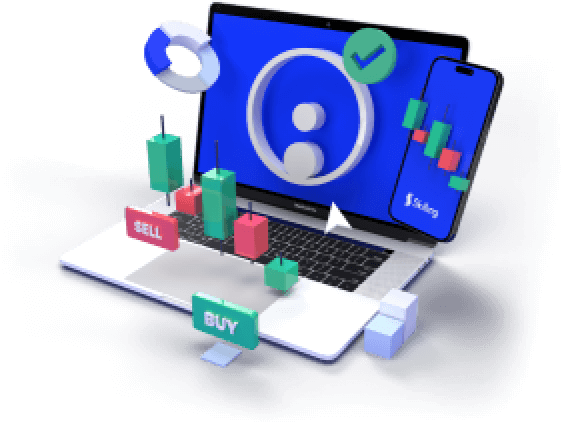The put/call ratio is a widely used measure of market sentiment. It compares the trading volume of put options (bets on downside) to call options (bets on upside). A ratio near 1.0 suggests balanced sentiment, while readings far above or below can reveal market extremes.
In 2025, with volatility fluctuating and central bank policy shaping expectations, traders increasingly look at this ratio to confirm whether the crowd is leaning bullish or bearish.
Access 1,200+ global CFDs instruments.
Access a plethora of trading opportunities across the financial markets.

How It Works
- Put options give the right to sell an asset at a set price. Investors often buy puts as protection against declines.
- Call options give the right to buy at a set price. They are often used to bet on rising prices.
Put/Call Ratio = Total Puts ÷ Total Calls
Example: If 1 million puts and 500,000 calls are traded in a session, the ratio is 2.0 — signaling more downside protection than upside speculation.
Why Traders Care
The put/call ratio offers insights into positioning:
- High ratio (above 1.2) : Investors are buying more puts than calls. This often signals fear, hedging, or bearish sentiment. Extreme highs may point to oversold conditions.
- Low ratio (below 0.8) : Calls outnumber puts. This shows optimism or greed. Extreme lows may warn of overbought conditions.
- Neutral zone (0.8–1.2) : Balanced trading. No clear sentiment bias.
Traders use these signals as contrarian indicators. If fear is extreme, markets sometimes rebound. If optimism is too high, corrections may follow.
Interpreting Context in 2025
Not all high or low readings mean the same thing. For example:
- During earnings season, more “call-buying” can reflect speculation on rallies.
- Ahead of Fed meetings, “put-buying” may reflect caution, not necessarily panic.
- Sector-specific ratios can differ sharply from the broad market. Tech-heavy indices may lean toward calls, while defensive sectors may skew toward puts.
This makes context critical. Traders rarely rely on the put/call ratio alone, but combine it with volatility measures like the VIX, sentiment surveys, and technical levels.
Risks of Misuse
Overreliance on the put/call ratio can mislead. A high reading may stay high during extended downtrends. Similarly, low ratios can persist during strong bull markets. Timing becomes essential.
That’s why most traders integrate the ratio into broader strategies — looking for divergences between sentiment and price action rather than standalone signals.
Strategies Using the Ratio
- Contrarian trading: Fade extremes in sentiment by positioning opposite the crowd.
- Confirmation : Use the ratio to confirm signals from charts or macro data.
- Risk management : Adjust exposure when ratios show extremes, reducing leverage or hedging positions.
Capitalise on volatility in index markets
Take a position on moving index prices. Never miss an opportunity.

FAQs
1. What does a high put/call ratio mean?
It suggests traders are buying more downside protection, often linked to fear or caution.
2. Is a low put/call ratio bullish?
It often signals optimism, but extreme lows can precede pullbacks.
3. How do traders use the ratio?
As a sentiment gauge, it is often used in combination with tools like the VIX or technical analysis.
4. Does the ratio always predict reversals?
No, trends can keep ratios extreme for long periods. It is best used with other indicators.
5. Where is the ratio most relevant?
In highly liquid markets like S&P 500 options, where positioning reflects broad sentiment.











